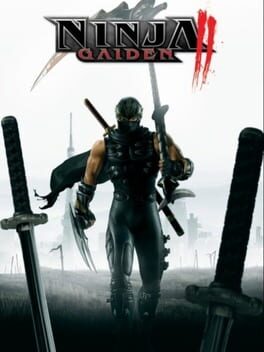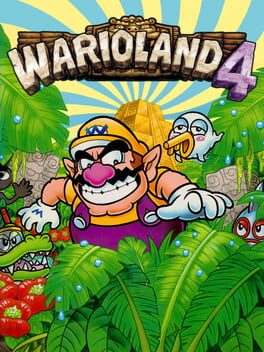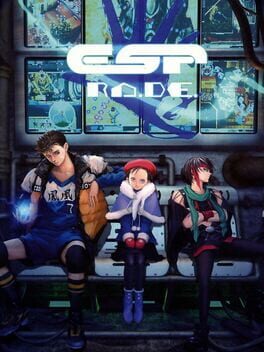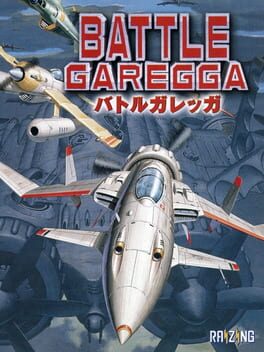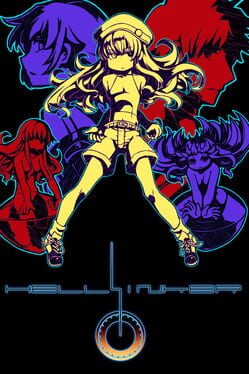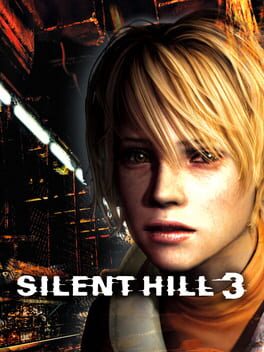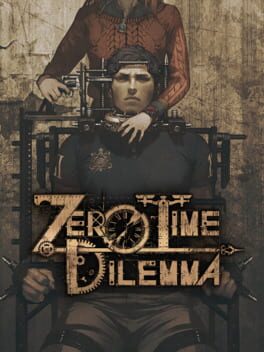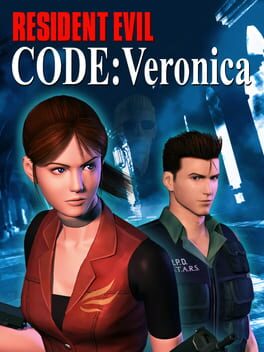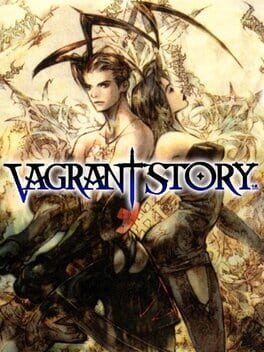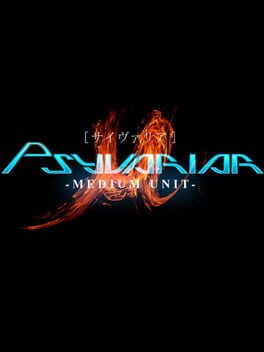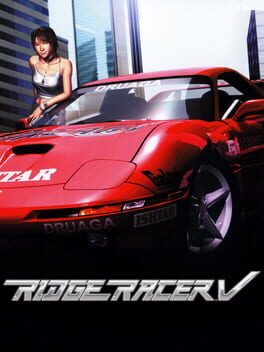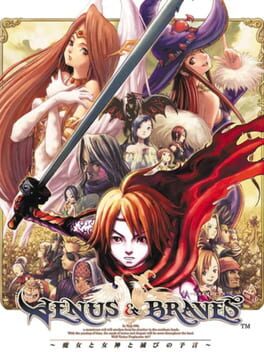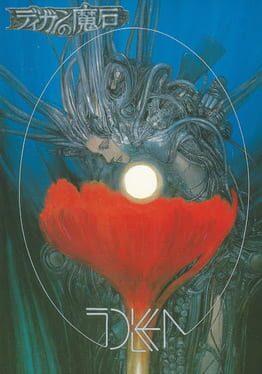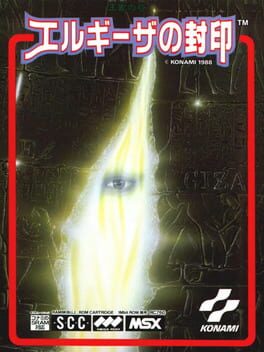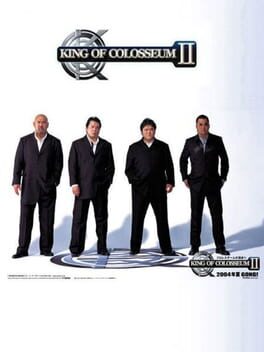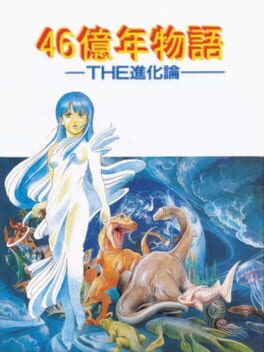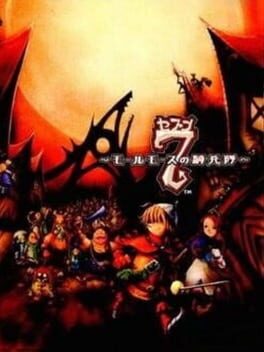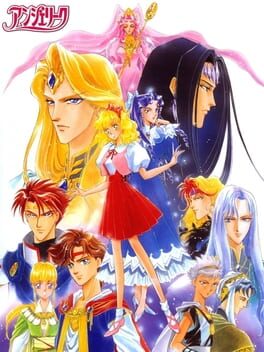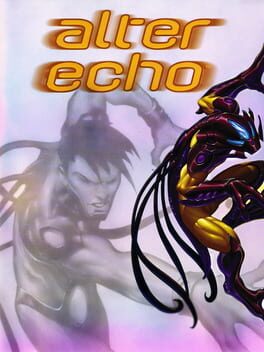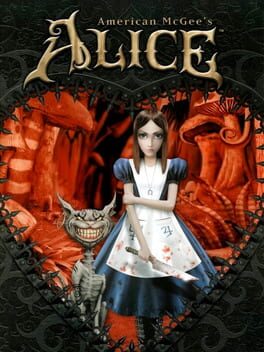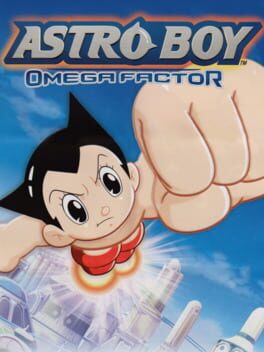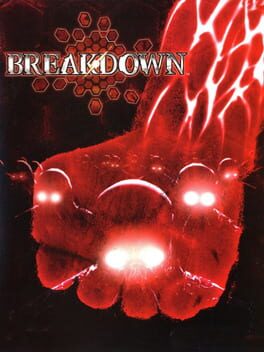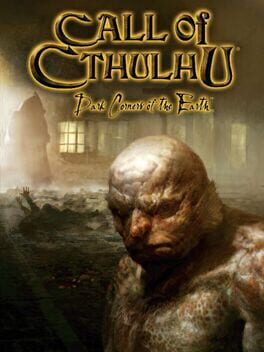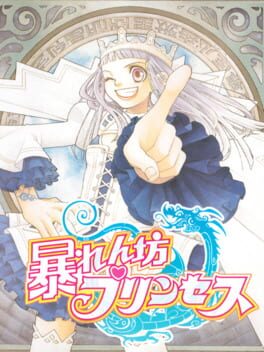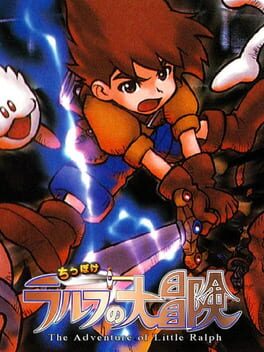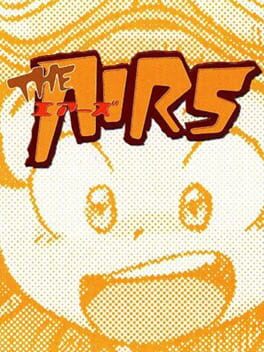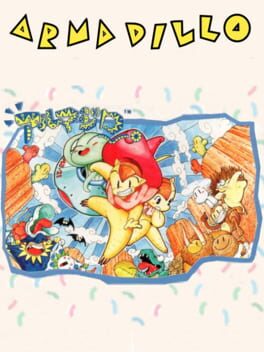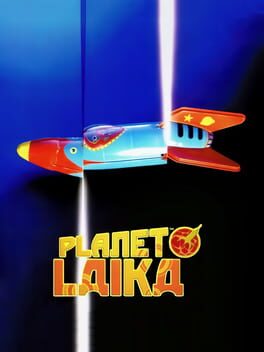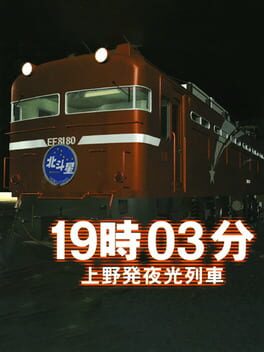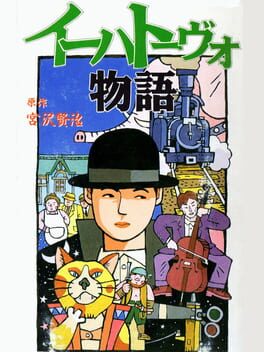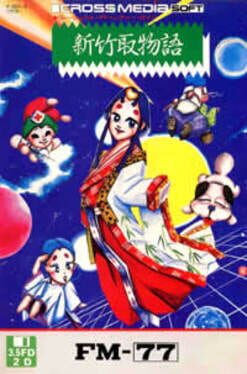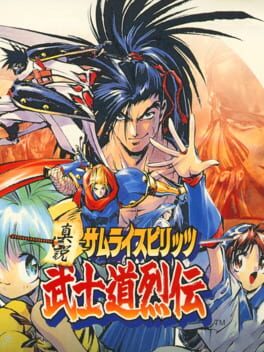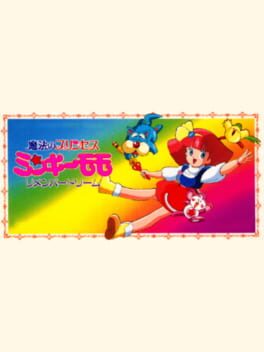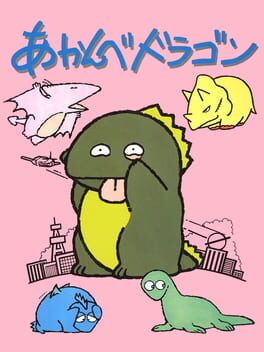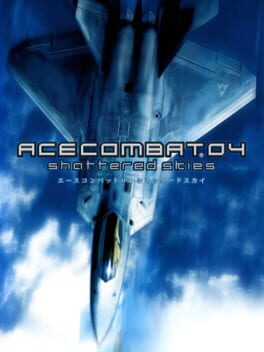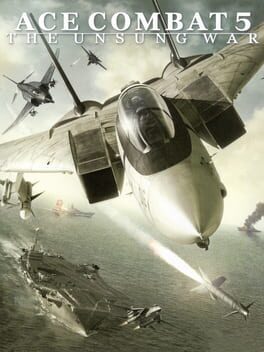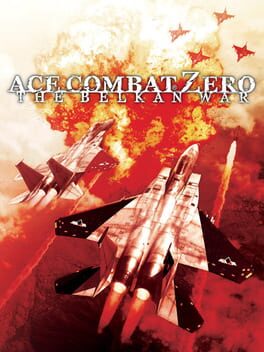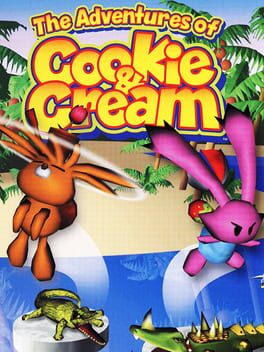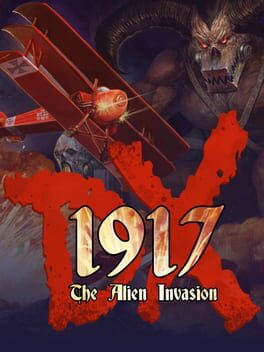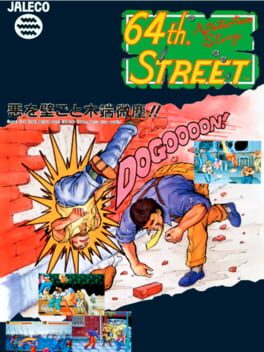FancyTickler
11 reviews liked by FancyTickler
Ninja Gaiden II
2008
This game is good not because of difficulty but of insanity.
Even on normal difficulty, There are almost 7-8 or more enemies at once in this game. But unlike the dynasty warriors games, they will attack very aggressively. On top of that, they don't forget to provide supports from a distance.
However, the main character Ryu Hayabusa can use a variety of weapons and so be capable of fighting against enemies. He can attack in a wide area with UT, a strong-attack-hold invincible technique that has been available since the first game. Moreover, in Ninja Gaiden 2, the number of weapons has increased, and the concept of the delimbing mechanism has been introduced, making the flavor of Ninja Gaiden 2 different from the first one.
As I said, the most noticeable new feature of Ninja Gaiden 2 is the body delimbing. Enemies whose bodies have been partially severed are slowed down and killed by a single strong-attack, Which is called OT. Moreover, Ryu is invincible during while he executes OT! But beware, a severed enemy will "self-destruct" during a grab, inflicting significant damage that cannot be guarded against.
You have to consider what type of weapon has the best range and what type of enemy (human, demon, machine, etc.) has the highest rate of delimbing, and depending on the situation and enemy combination. If the situation is not good enough to attack enemies, You have to think about which would be the most efficient for defense -- guard, counter, or dash away. And sometimes you have to adjust the enemy pressures by leaving the delimbed enemy alone even you know the risk that they can do eventual self-destruction. These executions are done with split-second judgment. The enemy is killed. Numerous enemies come out again. And you make another decisions and kill them. Repeat. This is the basic flow of Ninja Gaiden 2.
After the hectic fights, Walls and floors are painted with vivid red blood and the dead bodies and their parts are all over around Ryu. Then, You will remind my words. This game is good not because of difficulty but of insanity.
Even on normal difficulty, There are almost 7-8 or more enemies at once in this game. But unlike the dynasty warriors games, they will attack very aggressively. On top of that, they don't forget to provide supports from a distance.
However, the main character Ryu Hayabusa can use a variety of weapons and so be capable of fighting against enemies. He can attack in a wide area with UT, a strong-attack-hold invincible technique that has been available since the first game. Moreover, in Ninja Gaiden 2, the number of weapons has increased, and the concept of the delimbing mechanism has been introduced, making the flavor of Ninja Gaiden 2 different from the first one.
As I said, the most noticeable new feature of Ninja Gaiden 2 is the body delimbing. Enemies whose bodies have been partially severed are slowed down and killed by a single strong-attack, Which is called OT. Moreover, Ryu is invincible during while he executes OT! But beware, a severed enemy will "self-destruct" during a grab, inflicting significant damage that cannot be guarded against.
You have to consider what type of weapon has the best range and what type of enemy (human, demon, machine, etc.) has the highest rate of delimbing, and depending on the situation and enemy combination. If the situation is not good enough to attack enemies, You have to think about which would be the most efficient for defense -- guard, counter, or dash away. And sometimes you have to adjust the enemy pressures by leaving the delimbed enemy alone even you know the risk that they can do eventual self-destruction. These executions are done with split-second judgment. The enemy is killed. Numerous enemies come out again. And you make another decisions and kill them. Repeat. This is the basic flow of Ninja Gaiden 2.
After the hectic fights, Walls and floors are painted with vivid red blood and the dead bodies and their parts are all over around Ryu. Then, You will remind my words. This game is good not because of difficulty but of insanity.
Wario Land 4
2001
Recommended by Nightblade as part of this list.
Wario is an odd character isn't he? Mario's opposite in every way, a bootleg completely defined by his contrast to his sanitized, family-friendly multi-million dollar counterpart. Mario is a chaste man of virtue, a hero of few words who saves the girl out of the goodness of his heart, a marketable face a la Mickey Mouse, utterly lacking in personality or character outside of being comically Italian. Wario in contrast is a portly type, a Kavorka Man defined by his vices, an ugly, greedy bastard who loves to gloat, with a face only a mother could love. And yet it is because Wario is entirely defined by being the antithesis of Mr. Jumpman that he has the one thing Mario could never dream of: freedom. Mario is confined by the brand, the 40 years of jumping and sleek design ethos iterated upon for decades over multiple console generations until the formula is down pat, the Super Mario Brand of platforming action. Wario's status as the opposite also extends to his games and their design, his freedom to experiment and spread his wings so to speak allow Wario to do whatever he damn well pleases, which is why even now, Wario Land 4 stands tall as Wario's "greatest achievement".
Wario Land 4 came hot off the heels of the last big Mario romp at the time, Super Mario 64, and in many ways, feels like a parody of sorts. Wario's latest treasure hunt has lead to him being trapped in a pyramid, where he must jump into paintings to gather a series of collectibles and save the princess utilizing his robust and dynamic moveset to do so. While the comparisons to be drawn are obvious, Wario Land 4's design philosophy veers in a different direction, being a much more linear experience focused more on Wario and his interactions with the environment than the exploration of the environments themselves. The functional immortality of previous Wario Land games is toned-down but still ever-present, with certain enemy types changing Wario's movement properties in ways that create a unique dynamic of enemies being both a puzzle-solving tool and an obstacle, that alongside each level introducing a new gimmick and gameplay mechanic to experiment contributes to some incredibly strong level design that makes each stage feel unique and distinct.
The exploration aspect of Wario Land 4 is contrasted by it's HURRY UP! mechanic, each level capped off by a switch that activates a countdown timer that will kick you out of the level and rob Wario of his riches if it reaches zero, transforming the previously, seemingly labyrinthine levels that you spent oodles of time exploring into these one-way obstacle courses that demand perfect execution on higher difficulties if you want a chance to make it to the end with your treasure in-tact. It's a genius mechanic that makes Wario Land 4 stand out and adds another layer to the level design in ways you wouldn't expect, complimented by Wario's fantastic and dynamic moveset that makes these mad dashes some of the most satisfying platforming action on the GBA.
But the biggest aspect of Wario Land 4 that makes it stand out from it's doppelganger's series of games is that aesthetically, it's fucking weird. Compared to the cartoonish surreality of the Mario series, with its anthropomorphic turtles and scenery dotted with eyes, Wario Land 4 is reminiscent of the gross-out humor of the 90s, containing surreal, disgusting, sometimes horrific spritework and enemy designs, alongside an incredibly dynamic and off-kilter soundtrack that gives the whole game an certain edge most Nintendo products would never even deign to hint at. Many of the staff that worked on Wario Land 4 would go on to work on WarioWare, Inc.: Mega Micro Game$! 2 years after Wario Land 4's release, and its immediately apparent in Wario Land 4's overall attitude. Yet, it's this edge and experimentation that makes Wario so charismatic a player character, so charming a man that he captures your heart through his sincerity and in-your-face attitude.
Considering that state of Nintendo at the moment, its no wonder that this kind of off-kilter platforming action has yet to resurface in its modern oeuvre, considering the sleek minimalist nature of the Switch and the stark white of the UI in Nintendo's triple-A titles. The wacky, innovative spirit may live on in the WarioWare franchise, but any hopes of Wario's puzzle-platforming antics resurfacing at the Big N's HQ are minimal at best, which is a shame because Wario Land's vibes are infinitely more magnetic than whatever sterile mask Mario is putting on for the public. Du Doppelgänger! Du bleicher Geselle! How you shall be missed...
Wario is an odd character isn't he? Mario's opposite in every way, a bootleg completely defined by his contrast to his sanitized, family-friendly multi-million dollar counterpart. Mario is a chaste man of virtue, a hero of few words who saves the girl out of the goodness of his heart, a marketable face a la Mickey Mouse, utterly lacking in personality or character outside of being comically Italian. Wario in contrast is a portly type, a Kavorka Man defined by his vices, an ugly, greedy bastard who loves to gloat, with a face only a mother could love. And yet it is because Wario is entirely defined by being the antithesis of Mr. Jumpman that he has the one thing Mario could never dream of: freedom. Mario is confined by the brand, the 40 years of jumping and sleek design ethos iterated upon for decades over multiple console generations until the formula is down pat, the Super Mario Brand of platforming action. Wario's status as the opposite also extends to his games and their design, his freedom to experiment and spread his wings so to speak allow Wario to do whatever he damn well pleases, which is why even now, Wario Land 4 stands tall as Wario's "greatest achievement".
Wario Land 4 came hot off the heels of the last big Mario romp at the time, Super Mario 64, and in many ways, feels like a parody of sorts. Wario's latest treasure hunt has lead to him being trapped in a pyramid, where he must jump into paintings to gather a series of collectibles and save the princess utilizing his robust and dynamic moveset to do so. While the comparisons to be drawn are obvious, Wario Land 4's design philosophy veers in a different direction, being a much more linear experience focused more on Wario and his interactions with the environment than the exploration of the environments themselves. The functional immortality of previous Wario Land games is toned-down but still ever-present, with certain enemy types changing Wario's movement properties in ways that create a unique dynamic of enemies being both a puzzle-solving tool and an obstacle, that alongside each level introducing a new gimmick and gameplay mechanic to experiment contributes to some incredibly strong level design that makes each stage feel unique and distinct.
The exploration aspect of Wario Land 4 is contrasted by it's HURRY UP! mechanic, each level capped off by a switch that activates a countdown timer that will kick you out of the level and rob Wario of his riches if it reaches zero, transforming the previously, seemingly labyrinthine levels that you spent oodles of time exploring into these one-way obstacle courses that demand perfect execution on higher difficulties if you want a chance to make it to the end with your treasure in-tact. It's a genius mechanic that makes Wario Land 4 stand out and adds another layer to the level design in ways you wouldn't expect, complimented by Wario's fantastic and dynamic moveset that makes these mad dashes some of the most satisfying platforming action on the GBA.
But the biggest aspect of Wario Land 4 that makes it stand out from it's doppelganger's series of games is that aesthetically, it's fucking weird. Compared to the cartoonish surreality of the Mario series, with its anthropomorphic turtles and scenery dotted with eyes, Wario Land 4 is reminiscent of the gross-out humor of the 90s, containing surreal, disgusting, sometimes horrific spritework and enemy designs, alongside an incredibly dynamic and off-kilter soundtrack that gives the whole game an certain edge most Nintendo products would never even deign to hint at. Many of the staff that worked on Wario Land 4 would go on to work on WarioWare, Inc.: Mega Micro Game$! 2 years after Wario Land 4's release, and its immediately apparent in Wario Land 4's overall attitude. Yet, it's this edge and experimentation that makes Wario so charismatic a player character, so charming a man that he captures your heart through his sincerity and in-your-face attitude.
Considering that state of Nintendo at the moment, its no wonder that this kind of off-kilter platforming action has yet to resurface in its modern oeuvre, considering the sleek minimalist nature of the Switch and the stark white of the UI in Nintendo's triple-A titles. The wacky, innovative spirit may live on in the WarioWare franchise, but any hopes of Wario's puzzle-platforming antics resurfacing at the Big N's HQ are minimal at best, which is a shame because Wario Land's vibes are infinitely more magnetic than whatever sterile mask Mario is putting on for the public. Du Doppelgänger! Du bleicher Geselle! How you shall be missed...
ESP Ra.De.
1998
It's interesting to look back at the year 1998 as a shooting game fan. It is a year where it feels like every company in the business was firing on all cylinders, yet simultaneously, the genre hung in the balance. In 1997 Cave released Dodonpachi, undoubtedly the most important shooting game made since their former selves in Toaplan put out flying shark in '87. And whilst it's basic formula defined both cave and the post-milennium shooter space, in 98 it was far from set in stone.
When you look at the other games from 98, it's easy to see a world where Radiant Silvergun, Armed Police Batrider, Dangun Feveron, Raiden Fighters Jet, Raycrisis or even Gunbird 2 and Blazing Star come out on top. A whole pile of ridiculously high-quality games that you can all make the case are the dev's finest, all at once. And whilst many of those games are still influencial, particularly RSG and Batrider - ESPrade is the one that truly came out on top.
Which is a bit odd on the face of it. Particulary in the western space a lack of localisation, ports and rights issues left it particularly obscure even among cave games, when it's stupidly important to shmup history and is one of Cave's absolute finest games.
The most important facet to ESPrade is it's presentation. Flying people over a cyberpunk tokyo fighting psychic battles with huge tanks, the psychic Yakuza and old women sitting on the cooles sprite of a statue head ever - it's all extremely cool. There's clearly a lot taken from Akira here (probably among others) but its far from a ripoff and is definetly itself. Artist and Mangaka had been working with Toaplan and it's offshoots Gazelle and Cave since 1991 but ESPrade was his first real shot to lead a whole project artistically and it's absolutely glorious. ESPrade is to this day Cave's best looking game and it's not particularly close. The stage backgrounds alone are some of the best sprtie art you'll ever see, but there's particularly fantastic use of renders here - particularly in the main characters which allows a ridiculous number of animation frames in their movement whilst somehow still blending in well. Cave rarely dropped rendered characters in the years following and they have never looked as good as they have here, it's incredible.
Junya Inoue is also, frankly, whilst an extremely talented worldbuilder and artist, is really best at either adding flavour to existing, drier worlds like he does with Dodonpachi in Daioujou, or leaving a decent amount to the imagination, and ESPrade is the true encapsulation of the latter. You get a tiny amount of short scenes to set up plot and conflict and if you want more all you'll get is a ridiculous barrage of art because Inoue has drawn each of these characters like 900 times, sometimes in his Manga BTOOM! without permission, but nary a lick of story to defile a perfect setup and payoff. As you do.
And there's just great majesty to it. Radiant Silvergun's remarkable storytelling beats it out for sure, and Taito were way ahead of the curve on this in general, but ESPrade's management of tension and minimal storytelling is just done so damn well. It's helped by effectively having 3 Stage 1s thanks to each character have their own and then playing the other twos, and they all benefit from the traditional lengths cave goes to making stage 1s incredible - but stage 5 is the real killer. A brutal part 1 the game testing all your abilities of routing and throwing piles of the enemies you've previously fought in greater density - only then to face an eerie, nigh-horrific stage 5b where you mow down hundreds of creepy psychic clones before facing down Ms. Garra.
Oh and Ms. Garra might be the best shooting game boss fight ever. A 7 phase behemoth, and even if you split them up they'd all make the top 20 cave bosses. Despite the ludicrous amount of amazing artistry the game has to offer, the image of Ms Garra casting huge wings across the snowy tokyo night, firing a beautiful mirage of bullets will always define ESPrade. It, and the earlier, also exceptional fight against Satouro Oumi are basically copied beat for beat by Windows-era Touhou. I do not blame ZUN one bit.
Aside from incredible bosses though, ESPrade just has a fantastic game loop. It does take a bit to get to grips with but tagging enemies with power shot then killing with normal to score is exceptionally fun and in a true CAVE moment, they didnt really give it another go. Stage design is also top tier.
Being such a fantastic refinement of Dodonpachi's ideas and a great encapsulation of it's own makes ESPrade the true shining star of 1998. Flying people, 10 phase bosses, emphasis on pacing and bombast, bullet patterns like blooming flowers fired by cute anime girls - whilst Story of Eastern Wonderland beats it by a few months, and DoDonPachi set the ground work, ESPrade is the true catalyst of the Shooting tropes that would define everything up to the modern era.
But more than that, it's just one of CAVE's finest. I'd say their second best game after Ketsui, and one of the top 10 shooting games outright. Only really Taito has beaten out it's presentation and matched with some of Cave's best ever work, its an utter classic.
When looked at among the class of 98, it's easy to contemplate and lust for the world of shooters we could have got if say, Dangun Feveron was the game to catch on - like if dragons dogma had been the game to define RPGs of the 2010s instead of demon souls, for instance - but like with Demon souls, when you look back on that spark - its hard to blame it for the road it lead us down.
When you look at the other games from 98, it's easy to see a world where Radiant Silvergun, Armed Police Batrider, Dangun Feveron, Raiden Fighters Jet, Raycrisis or even Gunbird 2 and Blazing Star come out on top. A whole pile of ridiculously high-quality games that you can all make the case are the dev's finest, all at once. And whilst many of those games are still influencial, particularly RSG and Batrider - ESPrade is the one that truly came out on top.
Which is a bit odd on the face of it. Particulary in the western space a lack of localisation, ports and rights issues left it particularly obscure even among cave games, when it's stupidly important to shmup history and is one of Cave's absolute finest games.
The most important facet to ESPrade is it's presentation. Flying people over a cyberpunk tokyo fighting psychic battles with huge tanks, the psychic Yakuza and old women sitting on the cooles sprite of a statue head ever - it's all extremely cool. There's clearly a lot taken from Akira here (probably among others) but its far from a ripoff and is definetly itself. Artist and Mangaka had been working with Toaplan and it's offshoots Gazelle and Cave since 1991 but ESPrade was his first real shot to lead a whole project artistically and it's absolutely glorious. ESPrade is to this day Cave's best looking game and it's not particularly close. The stage backgrounds alone are some of the best sprtie art you'll ever see, but there's particularly fantastic use of renders here - particularly in the main characters which allows a ridiculous number of animation frames in their movement whilst somehow still blending in well. Cave rarely dropped rendered characters in the years following and they have never looked as good as they have here, it's incredible.
Junya Inoue is also, frankly, whilst an extremely talented worldbuilder and artist, is really best at either adding flavour to existing, drier worlds like he does with Dodonpachi in Daioujou, or leaving a decent amount to the imagination, and ESPrade is the true encapsulation of the latter. You get a tiny amount of short scenes to set up plot and conflict and if you want more all you'll get is a ridiculous barrage of art because Inoue has drawn each of these characters like 900 times, sometimes in his Manga BTOOM! without permission, but nary a lick of story to defile a perfect setup and payoff. As you do.
And there's just great majesty to it. Radiant Silvergun's remarkable storytelling beats it out for sure, and Taito were way ahead of the curve on this in general, but ESPrade's management of tension and minimal storytelling is just done so damn well. It's helped by effectively having 3 Stage 1s thanks to each character have their own and then playing the other twos, and they all benefit from the traditional lengths cave goes to making stage 1s incredible - but stage 5 is the real killer. A brutal part 1 the game testing all your abilities of routing and throwing piles of the enemies you've previously fought in greater density - only then to face an eerie, nigh-horrific stage 5b where you mow down hundreds of creepy psychic clones before facing down Ms. Garra.
Oh and Ms. Garra might be the best shooting game boss fight ever. A 7 phase behemoth, and even if you split them up they'd all make the top 20 cave bosses. Despite the ludicrous amount of amazing artistry the game has to offer, the image of Ms Garra casting huge wings across the snowy tokyo night, firing a beautiful mirage of bullets will always define ESPrade. It, and the earlier, also exceptional fight against Satouro Oumi are basically copied beat for beat by Windows-era Touhou. I do not blame ZUN one bit.
Aside from incredible bosses though, ESPrade just has a fantastic game loop. It does take a bit to get to grips with but tagging enemies with power shot then killing with normal to score is exceptionally fun and in a true CAVE moment, they didnt really give it another go. Stage design is also top tier.
Being such a fantastic refinement of Dodonpachi's ideas and a great encapsulation of it's own makes ESPrade the true shining star of 1998. Flying people, 10 phase bosses, emphasis on pacing and bombast, bullet patterns like blooming flowers fired by cute anime girls - whilst Story of Eastern Wonderland beats it by a few months, and DoDonPachi set the ground work, ESPrade is the true catalyst of the Shooting tropes that would define everything up to the modern era.
But more than that, it's just one of CAVE's finest. I'd say their second best game after Ketsui, and one of the top 10 shooting games outright. Only really Taito has beaten out it's presentation and matched with some of Cave's best ever work, its an utter classic.
When looked at among the class of 98, it's easy to contemplate and lust for the world of shooters we could have got if say, Dangun Feveron was the game to catch on - like if dragons dogma had been the game to define RPGs of the 2010s instead of demon souls, for instance - but like with Demon souls, when you look back on that spark - its hard to blame it for the road it lead us down.
As the dominance of arcades fades further into the past along with other relics of our memory, a growing collection of armchair critics have begun to question limited lives and their place in gaming, often unfairly maligning them as nothing but an outdated relic from a time where arcade operators just wanted to squeeze extra money out impressionable children. Similarly, many modern games have leaned away from actively scoring the player during the duration of the game, also to the delight of some. Obviously these don’t belong in every game (you’d be hard pressed to conjure a compelling argument as to why the scoring of Super Mario Bros. is one of the better elements to that title), but what detractors of these don’t recognize is the extra layers that immediately get added when you build a game around these two systems.
Scoring on its own may be an explicitly intrinsic reward in an old arcade game, but what happens when you’re granted extra lives for getting high scores? Suddenly the thought of working towards mastery over basic mechanics becomes a bit more alluring, especially in titles where an extra life can be the determining factor between continuing to play the game and being forced to spend more of your parent’s money. Depending on the game, you may also realize there's been a shocking amount of consideration for how scoring itself is handled - it's not just about bragging rights anymore, you’ve essentially unlocked a whole new slew of mechanics and gameplay challenges to play with in a title you may have disregarded before. These old games weren’t just a ploy to steal your money, they were designed by real people trying to make their game a more exciting and complete package than whatever other games were sharing space in the arcade.
These hidden gems of design ideas can still be found all over arcade titles waiting for a curious player to discover, and one genre that feels absolutely rich for this type of exploration is the shoot-em-up. These games tend to be so challenging for most players that the only reasonable way towards an elusive one credit clear is to earn extends through creative uses of the game’s scoring systems, because there's no way the layman would be able to get by without eventually crumbling under pressure and making mistakes. While you may not be able to read every single bullet pattern that gets thrown your way even after many hours of play, if you engage with the scoring system you’ll likely have a bit more room for error and have a far greater chance of reaching the end. While these games seem insurmountable at a glance, these truly are titles that anyone can learn and get into with enough determination and perseverance. That said, I think there’s extra room for these games to blossom and evolve even more than they already have since their inception.
Standard shmups are often complex but somewhat linear pieces of artistry. Interesting offensive mechanics may throw wrinkles into the equation and force players to consider each scenario with every possible solution, but due to the relative rigidity of bullet patterns and enemy layouts, you could reasonably find an optimal path through and solve the game with enough time, dedication, and study. There's obviously a certain beauty in that - ascending to match the piece on its level and finally seeing through the canvas between the splashes of painted bullets that get in your way of success - it's one of the more literal ways you can use games as a vessel for artistic expression and there's absolutely value in that. The only problem is that at a certain point, the core loop of the game shifts from a problem solving affair to an execution check. Obviously this type of gameplay has its own appeal, and my simplified summary doesn't account for tertiary methods of play such as score attack and pacifist runs (or any number of ways you feel like tweaking the gameplay flow to your liking), nor the arduous journey of climbing the mountain of success in the genre to even reach a point of true mastery. It's just that, with their traditional implementation, I don't find them to be the best vehicles for pure player freedom and expression in the medium of games.
On that note, I think it's unfortunate, albeit understandable to a certain degree, that Battle Garegga a title that's slipped under the radar for most. Its initial facade of an industrial war-grounded aesthetic is relatively unassuming paired next to the otherworldly architecture of galactic ambitions in more popular shooters, and at a glance it's hard to parse its mechanics any further than "it sure is a shmup". The irony here is that, once you peel back any preconceived notions on the game and really dig into its cavernous depths, this is by far one of the most enchanting takes on the genre you can find.
If traditional shmups are more about knowing what the game is about to say than what your actual response is, then Battle Garegga is all about constant back and forth exchanges where making a poor decision may blow up in your face with no easy way to bounce back. It's an active conversation, constantly flowing between leading roles of command and brief moments of reprise to consider your next plan of attack. Few games of any genre have truly captured this feeling for me, let alone shmups, but what's really surprising is that it doesn't do anything extremely complex on the surface to demand this type of engagement. There are many different selectable ships that fuzzy up the decision making during runs, but bullet patterns can be easier to read than what you may expect from your average Cave affair, your secondary attack options are multifaceted but still pretty easy to understand, and bombs mostly work how you'd expect for a shmup. Altogether, this makes the game rather easy to enjoy on a baseline level, but those elements alone are not what set it far above the pack for me. Rather, the defining element to Battle Garegga is it's infamous ranking system, essentially this game's version of dynamic difficulty scaling.
To me, dynamic difficulty is put into games for two primary reasons: putting higher skilled players in check to prevent them from feeling bored by a challenge they're far beyond the level of, and to push lower skilled players past their comfort zone and give them a taste of what's just beyond their grasp. You could make an argument that it's unfair to punish skillful play like this, but generally speaking I don't think this is done out of malice. It's fair to say most developers designing their game around scaling difficulty simply want to push players a little bit more each time they play and make sure they never hit a slump where they desync with the natural difficulty curve of the game. In its best iterations, dynamic difficulty has worked so well at keeping players in the zone that they didn't even notice it was pulling the strings at all.
Battle Garegga, conversely, feels outright antagonistic towards the player at basically every turn. Nearly every action in the game is enough to push the in-game rank just a little bit higher, and the only way to drop the rank is by dying. Don’t get your hopes up that this is like Resident Evil 4 or GOD HAND either, where you could easily tank the difficulty through repeated failure to make an upcoming section easier if you felt like it, because its limited life system will quickly net you a game over if you try to quickly drop your rank with rapid, thoughtless deaths. It sounds so simple, but applying this design idea to a shoot-em-up of all things has such massive ramifications on the game and seeps into every single facet of play. There's no doubt in my mind that many people have and will continue to drop Battle Garegga simply due to the Ranking system, and if they’re just starting out I don’t think I’d blame them. Improving at shmups already feels like an impossible task for most, so considering that the game was severely punishing them for standard play, as well as requiring more money for each credit at the game’s release, I can see why players quickly roll over to a different game after getting frustrated and confused at this one. In modern day with the benefit of hindsight however, I think brushing this aside would be a huge mistake.
As you can probably guess, Battle Garegga ignited a spark from me I haven’t felt in a long time. But what is it about this exhausting cocktail of cruelty and creativity that does it for me? Well all of it, frankly.
Rank is the big elephant in the room regarding the game as I’ve mentioned before, and it really is the backbone of the whole experience. Nearly everything you do increases the Rank, but what does this actually mean? In the long term, it means every decision made can have unforeseen consequences later in a run, varying from faster and denser bullet patterns to end-game bosses having their HP doubled, but simultaneously this means your short term stretches of gameplay are orders of magnitude more stressful. Take stage 1 for example, many shmups suffer from the first stage being a minute-long warmup before you get to the real game, and can lead to resets becoming all the more exhausting when the biggest slump of gameplay (comparatively anyway) happens right at the start. In Battle Garegga, there’s SO much shit to worry about and so many variables to consider that every fresh run feels like you’re already starting at nearly 100% mental capacity. I mentioned rigid routing earlier, but here it's not so cut and dry. Depending on your ship choice your upgrade route might swing wildly, and every item you pick up is preceded by a massive question that lingers for your entire playthrough: “how might this fuck me up later in the run?”
Looking at it on paper, it genuinely might not be a massive boon on your rank to pick up one extra shot upgrade or not, but even beyond the ramifications of prepping at the start for a stretch of the game you won’t reach for another 4 stages, there’s a blanket of anxiety that gets cast over a run from this that completely shifts the energy of the entire experience. For a mainstream comparison, I felt a similar ever-present pressure while playing through Resident Evil for the first time this year. Similar to controlling the Rank in Battle Garegga, every bullet fired and Ink Ribbon spent left me wondering much harder how my final stretch through the mansion would be, but it can’t be understated just how much of this is retained when compressing this feeling into a 30 minute game compared to spreading it across a 4+ hour one with multiple save points to catch your breath.
Not only does this change how you view items you’ve already collected and decisions you’ve already made, this has a really cool side effect on the physical space that items themselves take up before you even think about picking them up. While item drop locations are entirely deterministic, the shifting Rank means you can rarely be quite sure of when and where specific items might drop, and also inadvertently turns surprise random drops into an extended piece of the enemy roster. Some items are good at different points in the run, and also change in external value depending on how you want to deck out your ship, so every drop requires a quick and intelligent evaluation of whether it's something you should deal with or not. Options are probably the easiest example of this, being one of the most valuable upgrades you can earn for your ship, but adding more rank in one pickup than any other item in the game, so while you could pick up a few extra Options early to dramatically increase your DPS, you have to quickly decide whether or not this extra firepower is worth it in spite of the rather large immediate rank increase.
Medals are the one piece of this pie that feels a bit too rigid on paper, essentially being an item you should disregard entirely if you drop a combo and reset their value, but tied in with the rest of the items and the uncertainty of where they’ll appear, they end up wrapping around to becoming one of my favorite things to keep up with in a run. While the decision has basically already been made for you that you always want to pick them up to keep up a chain and quickly work up towards an extend, they have a nasty habit of dropping in the most repugnant places possible, as keeping track of every mechanic at once, on top of keeping a mental note of what enemies exactly will drop the item you want, is just too fucking much for the average player to juggle. Enemy formations are already beautiful and layered in their construction and consideration for a distinct challenge, so tie that in with an item that essential feels random in its placement -on top of fighting enemies that can effectively change the spread of their attacks from run to run based primarily on your rank - and you end up with fresh and unique obstacles to overcome, often when you’re not ready for it. Depending on the speed of your ship a bad item spawn can be absolutely catastrophic, so having to stay on your toes and be ready to squeeze through even the tightest of bullets to keep up your chain gives me a rush like no other. Shmups are generally defined by absurd hand crafted patterns to push through, so having a persistent piece of challenge that feels as dynamic and unpredictable as this is an absolute breath of fresh air for me.
The final layer that really makes this system so fascinating is its relation to deaths and your failure state. Death is the only action capable of dropping the rank, and hoarding your lives for long stretches of time is a surefire way to end up with an experience far too hard to keep up with by the time you hit the halfway point of a run where your Rank REALLY starts to bite you in the ass. Naturally this has led to strategies revolving around deliberate suicides before challenging sections or getting an extend, but giving you extra room to bounce back from genuine mistakes is a nice motivator to try and push sloppy runs further than you may have tried before. Even in the worst of my runs, I constantly find myself saying stuff like “well, let’s see how the rest of the stage goes”, “at least my rank is a little bit lower now”, or “shit, I better play well in the next stage to get that extra extend.” Again, it's this dynamism that really sets this game apart from not just other shmups, but most games in general for me.
Now, if you’re familiar with the development of Battle Garegga there’s a chance you already know this, but here's the part where I have to rip off the bandaid and admit something. In an interview translated by blackoak on the Shmuptacular forum in 2011,
lead designer and programmer Shinobu Yagawa admitted of the Ranking system that “...It sounds bad, but it was one of my methods for increasing income for arcade operators.” While this may just seem like a damning condemnation of Yagawa and the rest of the team, like they just made the game as a 百円硬貨 muncher and it just organically evolved into the mechanical mess it is today, that would be ignoring the fact that everything surrounding Ranking is exceptionally well considered.
I’ve already mentioned the enemy formations, but the general stage design here is just absolutely perfect. Each stage usually has a central gimmick, setpiece, or persistent element to consider that gives every stretch of the game a distinct identity and creatively blows up your rank for the next stage and eventually fuck you over by the end of it all. My favorite of these being a massive 1-2-3 punch right around the middle of the game: A mini-boss in stage 3 that you have to tear apart piece by piece and keep alive for as long as possible to earn an extend while keeping track of the fighter planes that act as safe spots for the boss and new enemies for you to deal with, the dozens of medals that come from bombing huts in stage 4 that skyrocket your rank and deplete you of your resources right before the impending boss rush, and flying platforms in stage 5 that always drop six items of varying use, but the likes of which being tied to your item drop order mean the actual layout and set of drops is going to different every time you fight them. As an addendum to my old point on items as dynamic obstacles, this stage and set of enemies is maybe the best example of this. They’re by far the easiest enemies to fight in a vacuum, but the core of each platform being an obstacle course of items to weave through to either avoid extraneous Rank increases or to keep up your chain when a Medal spawns is one of the most breathtaking pieces of design I’ve ever seen in an arcade game.
There's no doubt in my mind Yagawa did not envision the modern version of how Battle Garegga would be played, but you don’t just accidentally design and map a game out as thoughtfully as this. Somehow there isn’t a single stage in the lineup that feels out of place, and all of them contribute to the structure in ways I just can't get enough of. I especially enjoy how even the game’s pacing keeps you on your toes, going from a dense set of 4 levels where you prep for the hardest sections of the game, a massive endurance test of a boss rush right in the middle that takes place over whats by far the longest stage of the game, and two final stages that, while pretty standard as far as structure go, act as your final test of the game’s mechanics quite well. Initially I wasn’t sure how to feel about the last third of the game shifting the focus away from Rank control and setpieces, but being the section that shows most clearly the ramifications of your choices throughout the game, as well as being the one stretch that's anything like this, I think it ends up slotting into the full stage lineup quite well. Somehow, despite being as crammed full of overlapping ideas and off the wall mechanics that always have a new wrinkle to uncover, everything fits into place and adds to the game meaninfully (even dying to drop your Rank clearly had some thought put into it, with the number of lives you have when dying determining how much your Rank will drop, meaning its always better to suicide before getting an extend and not after. Brilliant.)
Maybe this persistent stress and indecision felt during play is why Battle Garegga isn’t for everyone, but I just can’t get enough of it. Even though I’m far below the level where I can truly capitalize on every millisecond of play to maximize my score, I constantly find myself pulling back to appreciate this impossibly complex web of interwoven mechanics, and ogle at the ways players have broken the game in half and bent it to their will. The fact that the game is over 25 years old and players are still pushing the limits of what's possible in it is awe inspiring. This perfect combination of its unsolvability and difficulty of wrangling with it’s mechanics, combined with its loose enough structure to allow for players to truly stretch their legs and express themselves, is a perfect microcosm of why I fell in love with video games to begin with.
What I’ve come to learn over the years of getting into games from before my time is that first impressions might fool you, and may inevitably push you away from something you’ll truly fall in love with. We always hear about “don’t judge a book by its cover” but even beyond that, I think shaking away preconceptions of art (whether it land anywhere on the scale of a singular piece or an entire genre) can lead to finding new ways to appreciate even something as overtly laced with cynicism and cruelty as they come. Taking off the rose tinted glasses, it's extremely clear that the era of arcades from the 80s and 90s didn’t always have a clean experience for the player in mind. It’s why games were tough as nails in their original pay-to-play format, and it's why a massive stretch of early console games felt like they carried over some old bad habits from their predecessors. Income was always a driving factor to their design, and pretending that wasn’t the case would be extremely disingenuous of me. Looking beyond that, however, is the key to finding what made these games stick with people back then, and continue to pull them in now. If we all cast aside our rigid understanding and discussion of certain game design concepts, I think we’d all collectively find more games to fall in love with and appreciate. Maybe we’d find more games that have an exciting platter of stuff to dig into that was truly there all along, just hiding under our noses waiting to be discovered. Maybe we’d find more games like Battle Garegga.
Scoring on its own may be an explicitly intrinsic reward in an old arcade game, but what happens when you’re granted extra lives for getting high scores? Suddenly the thought of working towards mastery over basic mechanics becomes a bit more alluring, especially in titles where an extra life can be the determining factor between continuing to play the game and being forced to spend more of your parent’s money. Depending on the game, you may also realize there's been a shocking amount of consideration for how scoring itself is handled - it's not just about bragging rights anymore, you’ve essentially unlocked a whole new slew of mechanics and gameplay challenges to play with in a title you may have disregarded before. These old games weren’t just a ploy to steal your money, they were designed by real people trying to make their game a more exciting and complete package than whatever other games were sharing space in the arcade.
These hidden gems of design ideas can still be found all over arcade titles waiting for a curious player to discover, and one genre that feels absolutely rich for this type of exploration is the shoot-em-up. These games tend to be so challenging for most players that the only reasonable way towards an elusive one credit clear is to earn extends through creative uses of the game’s scoring systems, because there's no way the layman would be able to get by without eventually crumbling under pressure and making mistakes. While you may not be able to read every single bullet pattern that gets thrown your way even after many hours of play, if you engage with the scoring system you’ll likely have a bit more room for error and have a far greater chance of reaching the end. While these games seem insurmountable at a glance, these truly are titles that anyone can learn and get into with enough determination and perseverance. That said, I think there’s extra room for these games to blossom and evolve even more than they already have since their inception.
Standard shmups are often complex but somewhat linear pieces of artistry. Interesting offensive mechanics may throw wrinkles into the equation and force players to consider each scenario with every possible solution, but due to the relative rigidity of bullet patterns and enemy layouts, you could reasonably find an optimal path through and solve the game with enough time, dedication, and study. There's obviously a certain beauty in that - ascending to match the piece on its level and finally seeing through the canvas between the splashes of painted bullets that get in your way of success - it's one of the more literal ways you can use games as a vessel for artistic expression and there's absolutely value in that. The only problem is that at a certain point, the core loop of the game shifts from a problem solving affair to an execution check. Obviously this type of gameplay has its own appeal, and my simplified summary doesn't account for tertiary methods of play such as score attack and pacifist runs (or any number of ways you feel like tweaking the gameplay flow to your liking), nor the arduous journey of climbing the mountain of success in the genre to even reach a point of true mastery. It's just that, with their traditional implementation, I don't find them to be the best vehicles for pure player freedom and expression in the medium of games.
On that note, I think it's unfortunate, albeit understandable to a certain degree, that Battle Garegga a title that's slipped under the radar for most. Its initial facade of an industrial war-grounded aesthetic is relatively unassuming paired next to the otherworldly architecture of galactic ambitions in more popular shooters, and at a glance it's hard to parse its mechanics any further than "it sure is a shmup". The irony here is that, once you peel back any preconceived notions on the game and really dig into its cavernous depths, this is by far one of the most enchanting takes on the genre you can find.
If traditional shmups are more about knowing what the game is about to say than what your actual response is, then Battle Garegga is all about constant back and forth exchanges where making a poor decision may blow up in your face with no easy way to bounce back. It's an active conversation, constantly flowing between leading roles of command and brief moments of reprise to consider your next plan of attack. Few games of any genre have truly captured this feeling for me, let alone shmups, but what's really surprising is that it doesn't do anything extremely complex on the surface to demand this type of engagement. There are many different selectable ships that fuzzy up the decision making during runs, but bullet patterns can be easier to read than what you may expect from your average Cave affair, your secondary attack options are multifaceted but still pretty easy to understand, and bombs mostly work how you'd expect for a shmup. Altogether, this makes the game rather easy to enjoy on a baseline level, but those elements alone are not what set it far above the pack for me. Rather, the defining element to Battle Garegga is it's infamous ranking system, essentially this game's version of dynamic difficulty scaling.
To me, dynamic difficulty is put into games for two primary reasons: putting higher skilled players in check to prevent them from feeling bored by a challenge they're far beyond the level of, and to push lower skilled players past their comfort zone and give them a taste of what's just beyond their grasp. You could make an argument that it's unfair to punish skillful play like this, but generally speaking I don't think this is done out of malice. It's fair to say most developers designing their game around scaling difficulty simply want to push players a little bit more each time they play and make sure they never hit a slump where they desync with the natural difficulty curve of the game. In its best iterations, dynamic difficulty has worked so well at keeping players in the zone that they didn't even notice it was pulling the strings at all.
Battle Garegga, conversely, feels outright antagonistic towards the player at basically every turn. Nearly every action in the game is enough to push the in-game rank just a little bit higher, and the only way to drop the rank is by dying. Don’t get your hopes up that this is like Resident Evil 4 or GOD HAND either, where you could easily tank the difficulty through repeated failure to make an upcoming section easier if you felt like it, because its limited life system will quickly net you a game over if you try to quickly drop your rank with rapid, thoughtless deaths. It sounds so simple, but applying this design idea to a shoot-em-up of all things has such massive ramifications on the game and seeps into every single facet of play. There's no doubt in my mind that many people have and will continue to drop Battle Garegga simply due to the Ranking system, and if they’re just starting out I don’t think I’d blame them. Improving at shmups already feels like an impossible task for most, so considering that the game was severely punishing them for standard play, as well as requiring more money for each credit at the game’s release, I can see why players quickly roll over to a different game after getting frustrated and confused at this one. In modern day with the benefit of hindsight however, I think brushing this aside would be a huge mistake.
As you can probably guess, Battle Garegga ignited a spark from me I haven’t felt in a long time. But what is it about this exhausting cocktail of cruelty and creativity that does it for me? Well all of it, frankly.
Rank is the big elephant in the room regarding the game as I’ve mentioned before, and it really is the backbone of the whole experience. Nearly everything you do increases the Rank, but what does this actually mean? In the long term, it means every decision made can have unforeseen consequences later in a run, varying from faster and denser bullet patterns to end-game bosses having their HP doubled, but simultaneously this means your short term stretches of gameplay are orders of magnitude more stressful. Take stage 1 for example, many shmups suffer from the first stage being a minute-long warmup before you get to the real game, and can lead to resets becoming all the more exhausting when the biggest slump of gameplay (comparatively anyway) happens right at the start. In Battle Garegga, there’s SO much shit to worry about and so many variables to consider that every fresh run feels like you’re already starting at nearly 100% mental capacity. I mentioned rigid routing earlier, but here it's not so cut and dry. Depending on your ship choice your upgrade route might swing wildly, and every item you pick up is preceded by a massive question that lingers for your entire playthrough: “how might this fuck me up later in the run?”
Looking at it on paper, it genuinely might not be a massive boon on your rank to pick up one extra shot upgrade or not, but even beyond the ramifications of prepping at the start for a stretch of the game you won’t reach for another 4 stages, there’s a blanket of anxiety that gets cast over a run from this that completely shifts the energy of the entire experience. For a mainstream comparison, I felt a similar ever-present pressure while playing through Resident Evil for the first time this year. Similar to controlling the Rank in Battle Garegga, every bullet fired and Ink Ribbon spent left me wondering much harder how my final stretch through the mansion would be, but it can’t be understated just how much of this is retained when compressing this feeling into a 30 minute game compared to spreading it across a 4+ hour one with multiple save points to catch your breath.
Not only does this change how you view items you’ve already collected and decisions you’ve already made, this has a really cool side effect on the physical space that items themselves take up before you even think about picking them up. While item drop locations are entirely deterministic, the shifting Rank means you can rarely be quite sure of when and where specific items might drop, and also inadvertently turns surprise random drops into an extended piece of the enemy roster. Some items are good at different points in the run, and also change in external value depending on how you want to deck out your ship, so every drop requires a quick and intelligent evaluation of whether it's something you should deal with or not. Options are probably the easiest example of this, being one of the most valuable upgrades you can earn for your ship, but adding more rank in one pickup than any other item in the game, so while you could pick up a few extra Options early to dramatically increase your DPS, you have to quickly decide whether or not this extra firepower is worth it in spite of the rather large immediate rank increase.
Medals are the one piece of this pie that feels a bit too rigid on paper, essentially being an item you should disregard entirely if you drop a combo and reset their value, but tied in with the rest of the items and the uncertainty of where they’ll appear, they end up wrapping around to becoming one of my favorite things to keep up with in a run. While the decision has basically already been made for you that you always want to pick them up to keep up a chain and quickly work up towards an extend, they have a nasty habit of dropping in the most repugnant places possible, as keeping track of every mechanic at once, on top of keeping a mental note of what enemies exactly will drop the item you want, is just too fucking much for the average player to juggle. Enemy formations are already beautiful and layered in their construction and consideration for a distinct challenge, so tie that in with an item that essential feels random in its placement -on top of fighting enemies that can effectively change the spread of their attacks from run to run based primarily on your rank - and you end up with fresh and unique obstacles to overcome, often when you’re not ready for it. Depending on the speed of your ship a bad item spawn can be absolutely catastrophic, so having to stay on your toes and be ready to squeeze through even the tightest of bullets to keep up your chain gives me a rush like no other. Shmups are generally defined by absurd hand crafted patterns to push through, so having a persistent piece of challenge that feels as dynamic and unpredictable as this is an absolute breath of fresh air for me.
The final layer that really makes this system so fascinating is its relation to deaths and your failure state. Death is the only action capable of dropping the rank, and hoarding your lives for long stretches of time is a surefire way to end up with an experience far too hard to keep up with by the time you hit the halfway point of a run where your Rank REALLY starts to bite you in the ass. Naturally this has led to strategies revolving around deliberate suicides before challenging sections or getting an extend, but giving you extra room to bounce back from genuine mistakes is a nice motivator to try and push sloppy runs further than you may have tried before. Even in the worst of my runs, I constantly find myself saying stuff like “well, let’s see how the rest of the stage goes”, “at least my rank is a little bit lower now”, or “shit, I better play well in the next stage to get that extra extend.” Again, it's this dynamism that really sets this game apart from not just other shmups, but most games in general for me.
Now, if you’re familiar with the development of Battle Garegga there’s a chance you already know this, but here's the part where I have to rip off the bandaid and admit something. In an interview translated by blackoak on the Shmuptacular forum in 2011,
lead designer and programmer Shinobu Yagawa admitted of the Ranking system that “...It sounds bad, but it was one of my methods for increasing income for arcade operators.” While this may just seem like a damning condemnation of Yagawa and the rest of the team, like they just made the game as a 百円硬貨 muncher and it just organically evolved into the mechanical mess it is today, that would be ignoring the fact that everything surrounding Ranking is exceptionally well considered.
I’ve already mentioned the enemy formations, but the general stage design here is just absolutely perfect. Each stage usually has a central gimmick, setpiece, or persistent element to consider that gives every stretch of the game a distinct identity and creatively blows up your rank for the next stage and eventually fuck you over by the end of it all. My favorite of these being a massive 1-2-3 punch right around the middle of the game: A mini-boss in stage 3 that you have to tear apart piece by piece and keep alive for as long as possible to earn an extend while keeping track of the fighter planes that act as safe spots for the boss and new enemies for you to deal with, the dozens of medals that come from bombing huts in stage 4 that skyrocket your rank and deplete you of your resources right before the impending boss rush, and flying platforms in stage 5 that always drop six items of varying use, but the likes of which being tied to your item drop order mean the actual layout and set of drops is going to different every time you fight them. As an addendum to my old point on items as dynamic obstacles, this stage and set of enemies is maybe the best example of this. They’re by far the easiest enemies to fight in a vacuum, but the core of each platform being an obstacle course of items to weave through to either avoid extraneous Rank increases or to keep up your chain when a Medal spawns is one of the most breathtaking pieces of design I’ve ever seen in an arcade game.
There's no doubt in my mind Yagawa did not envision the modern version of how Battle Garegga would be played, but you don’t just accidentally design and map a game out as thoughtfully as this. Somehow there isn’t a single stage in the lineup that feels out of place, and all of them contribute to the structure in ways I just can't get enough of. I especially enjoy how even the game’s pacing keeps you on your toes, going from a dense set of 4 levels where you prep for the hardest sections of the game, a massive endurance test of a boss rush right in the middle that takes place over whats by far the longest stage of the game, and two final stages that, while pretty standard as far as structure go, act as your final test of the game’s mechanics quite well. Initially I wasn’t sure how to feel about the last third of the game shifting the focus away from Rank control and setpieces, but being the section that shows most clearly the ramifications of your choices throughout the game, as well as being the one stretch that's anything like this, I think it ends up slotting into the full stage lineup quite well. Somehow, despite being as crammed full of overlapping ideas and off the wall mechanics that always have a new wrinkle to uncover, everything fits into place and adds to the game meaninfully (even dying to drop your Rank clearly had some thought put into it, with the number of lives you have when dying determining how much your Rank will drop, meaning its always better to suicide before getting an extend and not after. Brilliant.)
Maybe this persistent stress and indecision felt during play is why Battle Garegga isn’t for everyone, but I just can’t get enough of it. Even though I’m far below the level where I can truly capitalize on every millisecond of play to maximize my score, I constantly find myself pulling back to appreciate this impossibly complex web of interwoven mechanics, and ogle at the ways players have broken the game in half and bent it to their will. The fact that the game is over 25 years old and players are still pushing the limits of what's possible in it is awe inspiring. This perfect combination of its unsolvability and difficulty of wrangling with it’s mechanics, combined with its loose enough structure to allow for players to truly stretch their legs and express themselves, is a perfect microcosm of why I fell in love with video games to begin with.
What I’ve come to learn over the years of getting into games from before my time is that first impressions might fool you, and may inevitably push you away from something you’ll truly fall in love with. We always hear about “don’t judge a book by its cover” but even beyond that, I think shaking away preconceptions of art (whether it land anywhere on the scale of a singular piece or an entire genre) can lead to finding new ways to appreciate even something as overtly laced with cynicism and cruelty as they come. Taking off the rose tinted glasses, it's extremely clear that the era of arcades from the 80s and 90s didn’t always have a clean experience for the player in mind. It’s why games were tough as nails in their original pay-to-play format, and it's why a massive stretch of early console games felt like they carried over some old bad habits from their predecessors. Income was always a driving factor to their design, and pretending that wasn’t the case would be extremely disingenuous of me. Looking beyond that, however, is the key to finding what made these games stick with people back then, and continue to pull them in now. If we all cast aside our rigid understanding and discussion of certain game design concepts, I think we’d all collectively find more games to fall in love with and appreciate. Maybe we’d find more games that have an exciting platter of stuff to dig into that was truly there all along, just hiding under our noses waiting to be discovered. Maybe we’d find more games like Battle Garegga.
HellSinker
2007
Voivod is my favorite band ever. While their whole discography is awash with greatness, the run of 1987's Killing Technology, 1988's Dimension Hatross, and 1989's Nothingface is unreal. The band took its otherworldly cold-metal dystopian phantasmagoria vision, spearheaded by guitarist Piggy's signature bizarre dissonant riffs, and channeled it through 3 masterpiece albums that each feel distinct yet interconnected, breaking new ground with a deftness that makes it seem trodden a thousand times before.
When thinking about Hellsinker, I am struck with the same sense of awe. Hellsinker, impossibly, manages to be both wildly experimental and meticulously refined, bursting with new ideas yet grounded in strong fundamentals. Made by a single person over years of hard work, but that's the cost: something of this nature can only exist in a compact idea-space, and an individual's mind is the most compact of all.
I hesitate to talk about the mechanics too much, because the process of discovery is so core to the game's soul, but I'll mention a couple as both a cross-section and to entice you.
One of the game's main mechanics is the suppression field, a small aura that appears when you aren't using your main shot and slows down nearby bullets. In contrast to rounded bullets though, pointy-looking bullets are slowed down less, or not at all. And an interesting and deadly emergent property is how slowing bullets causes them to clump up together, suddenly denying you space and breaking a pattern's natural symmetry. Hellsinker takes these as an opportunity to construct frenetic patterns of push-and-pull between player offense, space control, and dodging, and flicks them on and off with whiplash pacing.
Like many shmups, some enemies will be blocked from firing if you are close enough. But unlike almost all other shmups, touching an enemy won't kill you, but instead bounce you away erratically. These two factors, combined with most characters having some sort of melee ability, make Hellsinker one of the most aggressive shmups I've ever played. Like when locking-on in Crimzon Clover, knowing when to get up in somebody's face vs. when to back off is a critical skill. But instead of the calculating sound of "click-click-click," it's a rusty knife rushdown, standing in stark contrast to the game's alien aesthetic and evoking the same electrifying chemical reaction between cold metal and fiery aggression that Voivod harnesses in their music.
Once again, music comes to mind. Music, especially instrument-driven music, is actually quite an abstract medium, since it doesn't rely on traditional storytelling/narrative. Instead, it excels at creating complex mixes and flows of feelings by interfacing with the subconscious. Much like the lyrics of many songs, the literal meaning of Hellsinker's story isn't important. The connotations and the delivery are the substance, mingling with the cold blues and lonely techno-religious environments. The synth trance is deliberately synced with the events of the stages, a la fellow doujin work Touhou. The crunch of quasi-gunfire-on-metal and gauges narrated by artificial voices calls to mind both shmup monolith Ikaruga and Cynic's tech-death classic Focus.
Hellsinker is notorious for being offputting to newcomers, as this review humorously illustrates, but in a certain sense that's simply another piece in the whole. The many esoteric mechanics, the dreamlike storytelling, even the bizarrely in-character manual, all of it loops back into each other and contributes to the complex feelings of alienation, exhilaration, melancholy, and awe that is Hellsinker. But don't take my word for it, take the dev's:
"I don’t really consider story, setting, characters, and music as something standing apart from “game design” per se. Even if one of those elements is excellent, it’s more about the holistic, overall vision I’m trying to present, and in that sense, all those elements are just one part of the whole (on the other hand, provided it doesn’t feel like something is lacking, not everything has to be “perfect” for me). Ultimately one is creating a single cohesive experience, and I think it should be conceived that way from the outset." - Tonnor in a 2019 interview
In a certain sense, I consider this to be the highest calling of the medium: aesthetics and mechanics unified as one, without sacrificing either. This describes many of the canonical classics of course, but works that flower like this from an alien core, such as Hellsinker and Voivod's albums, are often doomed to the fringes, for that's the only place they can be born. Yet their flames burn, silently but ferociously, waiting to entrance the next unsuspecting passerby who gazes too deeply inside.
An utter masterwork.
When thinking about Hellsinker, I am struck with the same sense of awe. Hellsinker, impossibly, manages to be both wildly experimental and meticulously refined, bursting with new ideas yet grounded in strong fundamentals. Made by a single person over years of hard work, but that's the cost: something of this nature can only exist in a compact idea-space, and an individual's mind is the most compact of all.
I hesitate to talk about the mechanics too much, because the process of discovery is so core to the game's soul, but I'll mention a couple as both a cross-section and to entice you.
One of the game's main mechanics is the suppression field, a small aura that appears when you aren't using your main shot and slows down nearby bullets. In contrast to rounded bullets though, pointy-looking bullets are slowed down less, or not at all. And an interesting and deadly emergent property is how slowing bullets causes them to clump up together, suddenly denying you space and breaking a pattern's natural symmetry. Hellsinker takes these as an opportunity to construct frenetic patterns of push-and-pull between player offense, space control, and dodging, and flicks them on and off with whiplash pacing.
Like many shmups, some enemies will be blocked from firing if you are close enough. But unlike almost all other shmups, touching an enemy won't kill you, but instead bounce you away erratically. These two factors, combined with most characters having some sort of melee ability, make Hellsinker one of the most aggressive shmups I've ever played. Like when locking-on in Crimzon Clover, knowing when to get up in somebody's face vs. when to back off is a critical skill. But instead of the calculating sound of "click-click-click," it's a rusty knife rushdown, standing in stark contrast to the game's alien aesthetic and evoking the same electrifying chemical reaction between cold metal and fiery aggression that Voivod harnesses in their music.
Once again, music comes to mind. Music, especially instrument-driven music, is actually quite an abstract medium, since it doesn't rely on traditional storytelling/narrative. Instead, it excels at creating complex mixes and flows of feelings by interfacing with the subconscious. Much like the lyrics of many songs, the literal meaning of Hellsinker's story isn't important. The connotations and the delivery are the substance, mingling with the cold blues and lonely techno-religious environments. The synth trance is deliberately synced with the events of the stages, a la fellow doujin work Touhou. The crunch of quasi-gunfire-on-metal and gauges narrated by artificial voices calls to mind both shmup monolith Ikaruga and Cynic's tech-death classic Focus.
Hellsinker is notorious for being offputting to newcomers, as this review humorously illustrates, but in a certain sense that's simply another piece in the whole. The many esoteric mechanics, the dreamlike storytelling, even the bizarrely in-character manual, all of it loops back into each other and contributes to the complex feelings of alienation, exhilaration, melancholy, and awe that is Hellsinker. But don't take my word for it, take the dev's:
"I don’t really consider story, setting, characters, and music as something standing apart from “game design” per se. Even if one of those elements is excellent, it’s more about the holistic, overall vision I’m trying to present, and in that sense, all those elements are just one part of the whole (on the other hand, provided it doesn’t feel like something is lacking, not everything has to be “perfect” for me). Ultimately one is creating a single cohesive experience, and I think it should be conceived that way from the outset." - Tonnor in a 2019 interview
In a certain sense, I consider this to be the highest calling of the medium: aesthetics and mechanics unified as one, without sacrificing either. This describes many of the canonical classics of course, but works that flower like this from an alien core, such as Hellsinker and Voivod's albums, are often doomed to the fringes, for that's the only place they can be born. Yet their flames burn, silently but ferociously, waiting to entrance the next unsuspecting passerby who gazes too deeply inside.
An utter masterwork.
Dark Souls III
2016
Silent Hill 3
2003
Killer7
2005
9 lists liked by FancyTickler
by wondermagenta |
592 Games
by abri |
150 Games
by abri |
250 Games
by SuperCptKuma |
59 Games
by HumorousUsername |
269 Games
by Stage |
205 Games
by Eodqnlqwhuydo |
101 Games
by WzrdLovingWzrd |
472 Games
